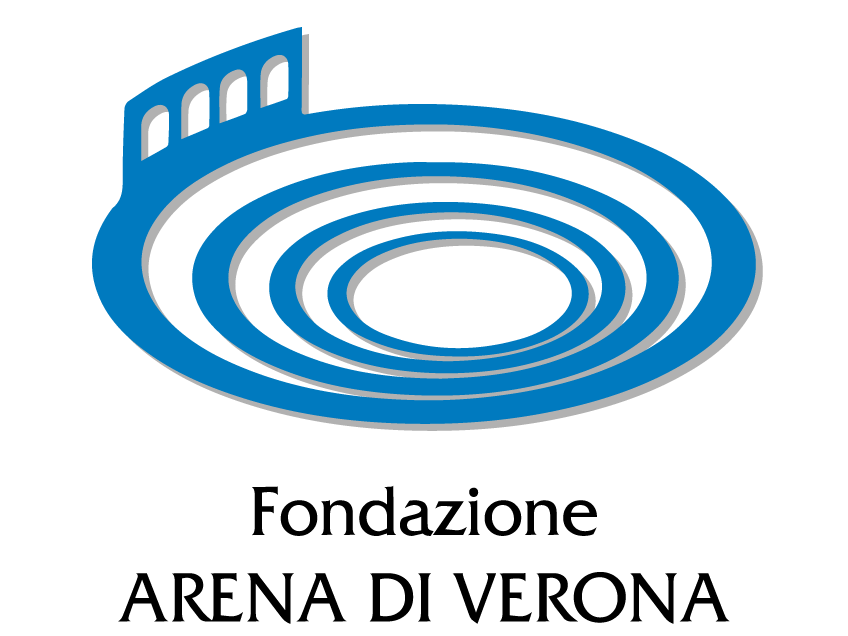

Legend
This is the accessible program booklet for Nabucco by Giuseppe Verdi. It contains 15 pages, which can be browsed both forward and backward.
It provides audio versions of the texts, audio descriptions, and videos in ISL, International Sign Language. The texts can be easily zoomed in and out, and the contrast of the display can be increased.
The “Audio text” button plays the audio of the texts read by a male voice while the “Audio description button plays the audio descriptions of the pictures read by a female voice. The “ISL” button plays videos in International Sign Language.
By using this accessible program booklet, you give explicit consent to accessing content hosted on third party websites.
Nabucco
by Giuseppe Verdi
Lyrical drama in four parts.
Libretto by
Temistocle Solera
Characters
Nabucco, King of Babylon [baritone] Ismaele, nephew of Sedecia, King of Jerusalem [tenor] Zaccaria, High Priest of the Hebrews [bass] Abigaille, slave, believed to be the first born of Nabucco [soprano] Fenena, daughter of Nabucco [soprano] The High Priest of Baal [bass] Abdallo, The High Priest of Baal [tenor] Anna, Zaccaria’s daughter [soprano]Babylonian soldiers, Hebrew soldiers, Levites, Magi, Hebrew virgins, Babylonian women, Dignitaries of the Kingdom of Babylon, the People

Part I
Nabucco, Fenena, Abigaille and Ismaele in front of the temple of Jerusalem.
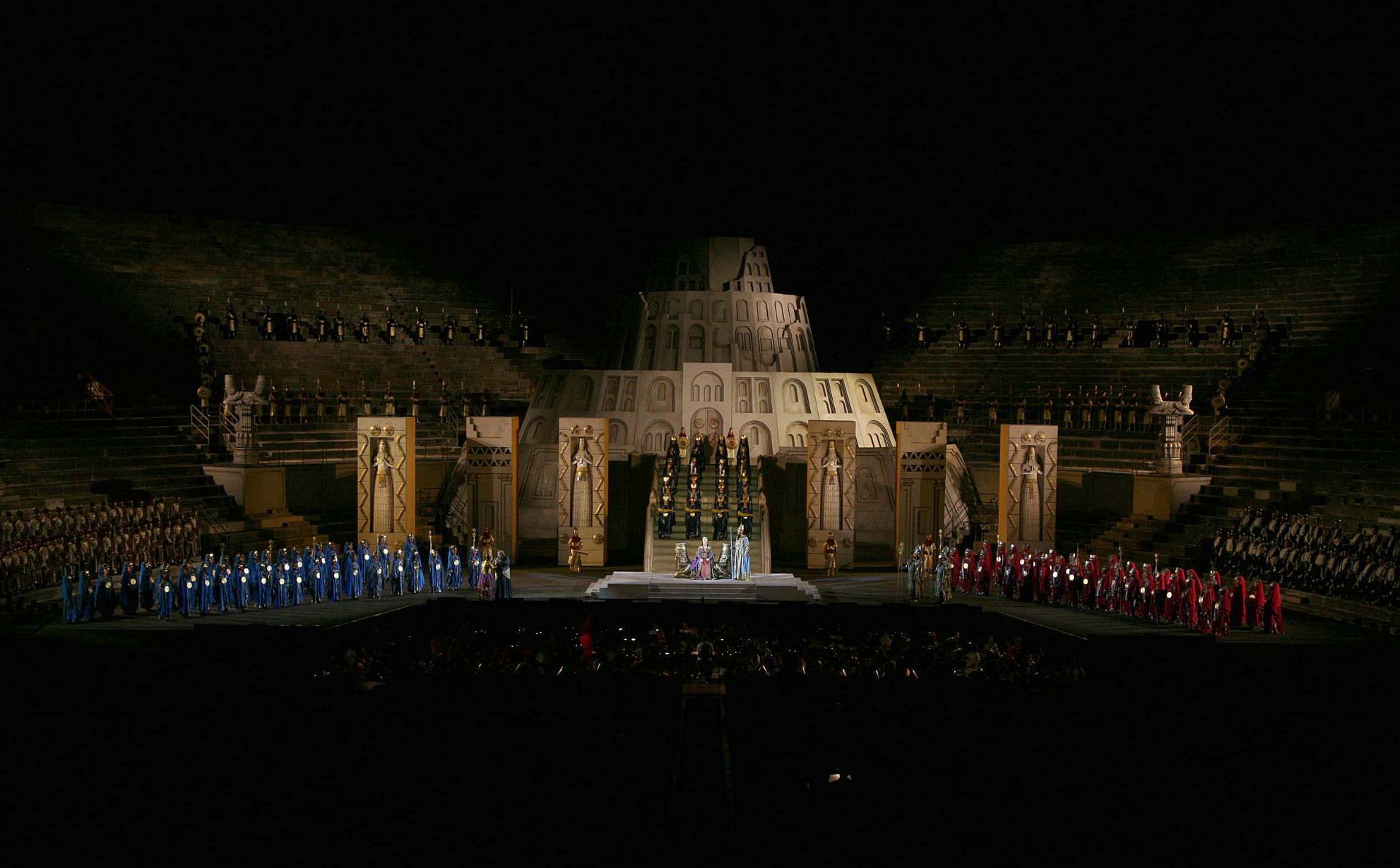
Part III
Abigaille in front of the royal palace of Babylon
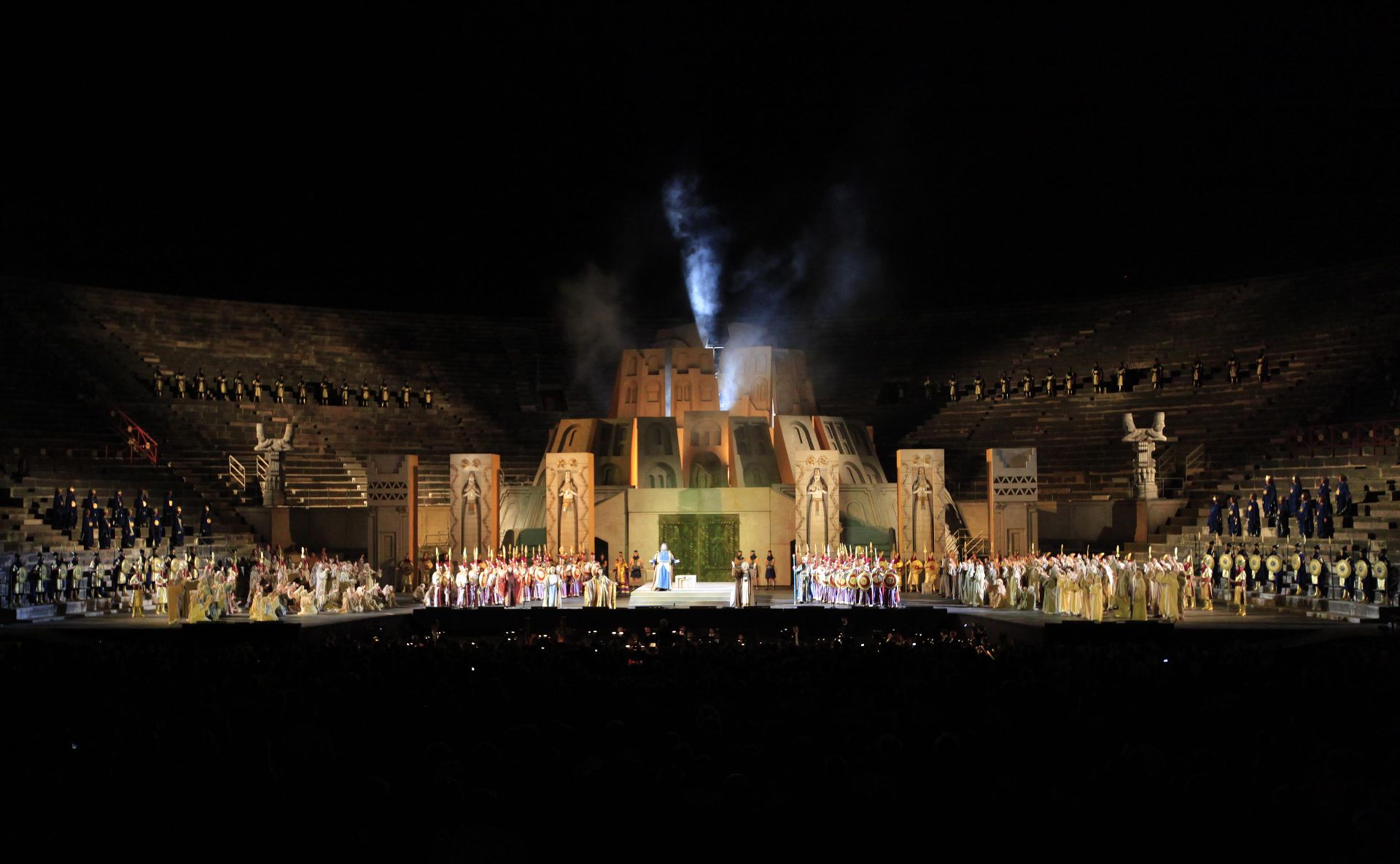
Part IV
Nabucco, Zaccaria and Fenena while the idol of Baal is falling.
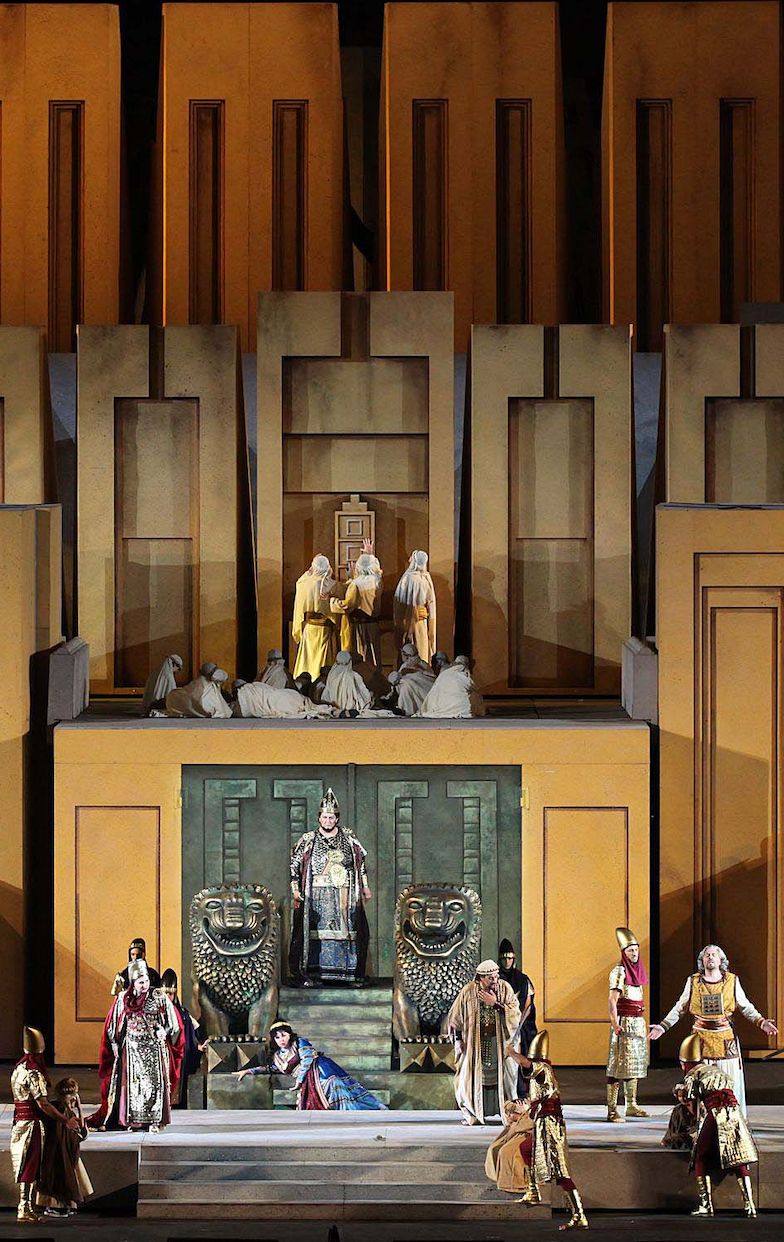
Part I
Nabucco, Fenena and Abigaille
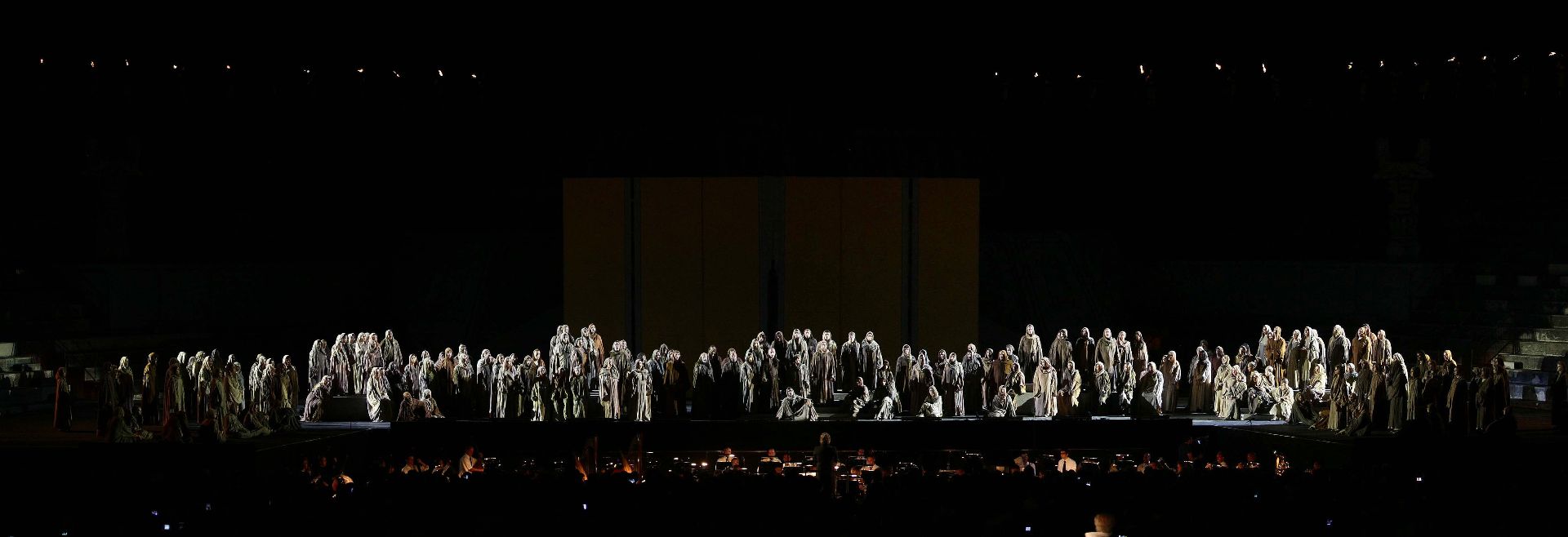
Part III
The Hebrews
Director’s Notes
Nabucco represents a complex road to redemption (personal, spiritual and political). Its unifying vision reflects that of the Italian patriots during the years when Verdi composed the opera, and it becomes the patriotic work par excellence in the collective imagination with the chorus of Va’, pensiero, sull’ali dorate, which is elevated to the status of a hymn to national redemption.
The opera returns to the stage of the Arena under the staging direction of Rinaldo Olivieri Created in 1991 by Gianfranco de Bosio. it is now considered a classic. “A modern metaphor – explains de Bosio – for the conflict between monotheism (the cult of the individual, of the spirit, and, therefore, strict adherence to form) and idolatrous religion (the cult of the plurality of the gods where the law of the strongest prevails and, therefore, an explosion of form – the cult of aestheticism)”.
On stage, this concept takes the form of a juxtaposition of the temple of Jerusalem and the royal palace of Babylon, which is made of enormous stone blocks with orange hues, surmounted by a circular ziggurat that recalls the la Torre di Babele in the famous painting by Pieter Bruegel. During the opera, the tower rises continuously until it finally explodes, “destroyed by the power of the spirit,” in the words of Bosio. This does not occur through divine intervention but because of the peace made between the two peoples, Babylonians and Hebrews, based on a common language – that of peace and harmony.
The contrast in the action of the opera is further underlined by Olivieri through the juxtaposition of the dynamism of the Hebrews and the solemnity of the Babylonians. These two different cultures and religions, at the height of misunderstanding, find a way to regain harmony in their plurality. From a chromatic point of view, the contrast is found in the colors of the costumes. Earthy colors (ocher, canvass white and browns) distinguish the sobriety of the costumes of the Hebrews while the Babylonians are dressed in longer, more lavish clothes with bright colors.
Synopsis
PART I
Jerusalem is besieged by Nabucco. Zaccaria encourages the Hebrew people taking refuge in the Solomon’s Temple because the daughter of the enemy, Fenena, has been captured. Zaccaria entrusts her to Ismaele, unaware that the two love each other. Ismaele attempts to free her but is stopped by a group of Babylonian soldiers disguised as Hebrews and led by Abigaille, Nabucco’s other daughter. She also loves Ismaele but considers love a source of leverage. She accuses him of treason and reproaches him because she offered him the kingdom of Babylon in exchange for his love. However, she is still willing to not pursue her revenge if Ismaele leaves Fenena, but he refuses. In the meantime, other Hebrews take refuge in the temple. When Nabucco enters with his warriors, Zaccaria threatens to kill Fenena, but Ismaele stops him and hands her over to her father. Nabucco then orders the temple to be destroyed.
PART II
Abigaille finds a document that reveals that she is an adopted slave. In the meantime, the High Priest of Baal informs her that Fenena has begun freeing the Hebrew prisoners after being appointed regent by her father. He also tells her that he has spread the word that Nabucco was slain in battle so that the people of Babylon will acclaim Abigaille queen. Zaccaria arrives as a prisoner of the Assyrians followed by a Levite with the tablets of the Law. The priest prays. The Levites curse Ismaele because he betrayed them, but Anna, Zaccaria’s sister, defends him because since Fenena converted to the God of Israel, he, in reality, saved a Hebrew. Abigaille appears, demanding the crown from Fenena. She is followed by Nabucco, who comes between the half-sisters, taking possession of the crown for himself. At this point, a divine thunderbolt strikes Nabucco, transforming him into an old man in the grip of madness. So, Abigaille snatches the crown and takes the throne.
PART III
The High Priest explains to queen Abigaille that the time has come to get rid of all the Hebrews, beginning with Fenena. Nabucco arrives, clearly delusional, and Abigaille takes advantage of his altered state, making him sign the death warrant for the Hebrews. In a moment of lucidity, however, the king remembers that Fenena chose to be a Hebrew. Nabucco regains his memory and orders Abigaille to prostrate herself before him because she is the daughter of a slave. This is right where Abigaille wanted him. She takes the document attesting her birth to a slave and tears it up. She then has Nabucco arrested, and he supplicates her to at least spare Fenena. In the meantime, the Hebrews are on the banks of the Euphrates. They are chained and forced to work, thinking nostalgically about their lost homeland. Zaccaria once again consoles his people and exhorts them to have faith. He prophesizes their liberation: Babylon will fall.
PART IV
The crowd weeps for Fenena as she is led to the gallows. Nabucco, now a prisoner, asks the God of Israel for forgiveness and promises to convert. Divine grace restores his mind, and he then orders the warriors that have remained faithful to him to follow him to redeem Assiria and to save Fenena. In the meantime, a funeral march is heard in the hanging gardens of Babylon, and the Hebrews that have been condemned to death appear. When Nabucco arrives, the idol of Baal falls, and the prisoners are freed. Nabucco entreats them to erect a new temple in his name on the ruins of the one that he destroyed in Jerusalem. Upon seeing her plans fail, Abigaille poisoned herself and now asks Fenena and Jehovah for forgiveness as she dies. Zaccaria can do nothing other than bless the king, redeemed by his new faith.


Credits
Technical implementation: Tadao Agency.
Descriptions: Elena Di Giovanni, Francesca Raffi
Videos in ISL: Monika Nawrot
Voices: Marco Quaglia (texts); Giulia Heathfield Di Renzi (audio descriptions)
Disclaimer
Copyright in these pages is owned by Fondazione Arena di Verona except where otherwise indicated by a third party's proprietary notice. These pages and the material published on them are also protected by intellectual property laws and may not be reproduced or appropriated in any manner without written permission of their respective owners.
For more information, please contact commerciale@arenadiverona.it